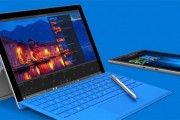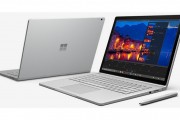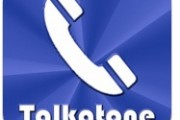The technology behind Surface is called Multi-touch. It has at least a 25-year history, beginning in 1982, with pioneering work being done at the University of Toronto (multi-touch tablets) and Bell Labs (multi-touch screens). The product idea for Surface was initially conceptualized in 2001 by Steven Bathiche of Microsoft Hardware and Andy Wilson of Microsoft Research. In October 2001, a virtual team was formed with Bathiche and Wilson as key members, to bring the idea to the next stage of development.
In 2003, the team presented the idea to the Microsoft Chairman Bill Gates, in a group review. Later, the virtual team was expanded and a prototype nicknamed T1 was produced within a month. The prototype was based on an IKEA table with a hole cut in the top and a sheet of architect vellum used as a diffuser. The team also developed some applications, including pinball, a photo browser and a video puzzle. Over the next year, Microsoft built more than 85 early prototypes for Surface. The final hardware design was finalized in 2005.
A version of the device was used in the 2005 Science Fiction movie The Island, which was used by Sean Bean’s character “Merrick”. As noted in the DVD commentary, the director Michael Bay stated the concept of the device came from consultation with Microsoft during the making of the movie.
Surface was unveiled by Microsoft CEO Steve Ballmer on May 29, 2007 at The Wall Street Journal’s D: All Things Digital conference in Carlsbad, California. Surface Computing is part of Microsoft’s Productivity and Extended Consumer Experiences Group, which is within the Entertainment & Devices division. The first few companies to deploy Surface will include Harrah’s Entertainment, Starwood Hotels & Resorts Worldwide, T-Mobile and a distributor, International Game Technology.
Microsoft notes four main components being important in Surface’s interface: direct interaction, multi-touch contact, a multi-user experience, and object recognition. The device also enables drag and drop digital media when wi-fi enabled devices are placed on its surface such as a Microsoft Zune or digital cameras.
Surface features multi-touch technology that allows a user to interact with the device at more than one point of contact. For example, using all of their fingers to make a drawing instead of just one. As an extension of this, multiple users can interact with the device at once.
The technology allows non-digital objects to be used as input devices. In one example, a normal paint brush was used to create a digital painting in the software. This is made possible by the fact that, in using cameras for input, the system does not rely on restrictive properties required of conventional touchscreen or touchpad devices such as the capacitance, electrical resistance, or temperature of the tool used (see Touchscreen).
The computer’s “vision” is created by a near-infrared, 850-nanometer-wavelength LED light source aimed at the surface. When an object touches the tabletop, the light is reflected to multiple infrared cameras with a net resolution of 1280 x 960, allowing it to sense, and react to items touching the tabletop.
Surface will ship with basic applications, including photos, music, virtual concierge, and games, that can be customized for the customers
Specifications
Surface is a 30-inch (76 cm) display in a table-like form factor, 22 inches (56 cm) high, 21 inches (53 cm) deep, and 42 inches (107 cm) wide. The Surface tabletop is acrylic, and its interior frame is powder-coated steel. The software platform runs on Windows Vista and has wired Ethernet 10/100, wireless 802.11 b/g, and Bluetooth 2.0 connectivity.


